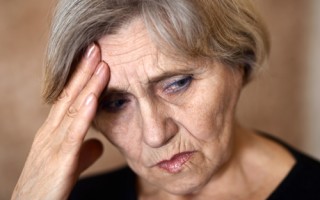
Suicide among elderly populations is a serious problem. The American Association for Marriage and Family Therapy revealed that though older people represent 12 percent of the population, they accounted for 18 percent of all suicides across the country. While this percentage is high, some experts believe that elder suicide is frequently unreported and does not account for "silent suicides," where older adults starve themselves, overdose or suffer from "accidents."
What causes suicide among the elderly?
Though suicide is rarely caused by only one event or reason, some of the common triggers include the recent death of a loved one, physical illness, uncontrollable pain or perceived poor health. Other contributing factors could be social isolation/loneliness, poor mental health, or a major change in social role or status. There are numerous warning signs that indicate an elderly resident may be contemplating suicide. Some of these signs include:
- Losing interest in previously enjoyed activities or hobbies.
- Going off diets or medical prescriptions.
- Stopping social interaction, or self-care.
- Giving away possessions or putting affairs in order.
- Experiencing a significant personal loss.
- Feeling worthless or hopeless about the future.
- Expressing suicide intent or fascination.
How can long-term care facilities prevent suicide among their older resident populations?
It is essential for long-term care providers to approach elder suicide rates seriously. However, approaching suicide risk among long-term care residents is challenging for most care providers. Many residents have experienced some of the common triggers for suicide, such as a loss of a spouse or major change in status.
Thus, they may be at a higher risk for suicide than older adults not living in these facilities. Yet elderly residents are less likely to seek out treatment for mental health problems or issues. As a result, it may be difficult for employees to effectively recognize and address suicidal thoughts before they turn to action. So how can care providers practice proactive suicide prevention measures?
Training is essential for suicide prevention. Facilities should offer staff training programs to educate employees about risk factors and what to do for residents who are expressing suicidal thoughts. Those who are at the highest risk should be referred to mental health professionals or undergo hospitalization. Meanwhile, staff members should still regularly check in with residents who are at a low risk for suicide. It's also essential for facilities to have a resident or on-call psychologist to evaluate residents periodically or whenever residents undergo a serious loss or illness.
To learn more about supporting your residents who are at risk for suicide, take one of Mariposa Training's long-term care courses, such as "Suicide and the Elderly: What Care Providers Need to Know," today!




